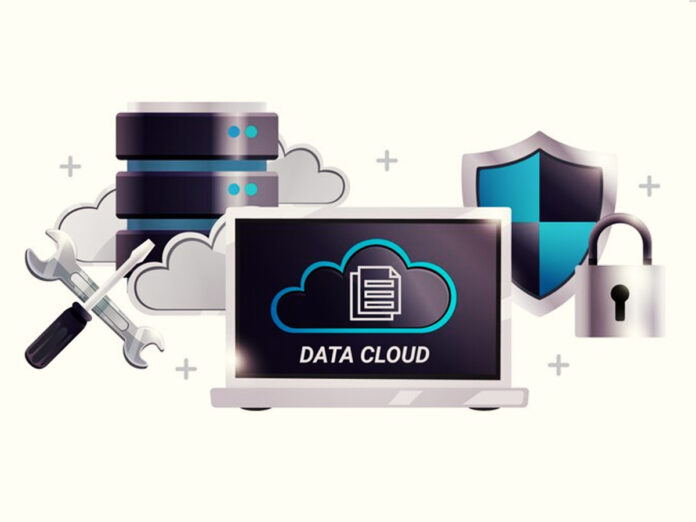Fintech Staff Writer
Modern trading environments require robust, adaptable, and secure IT infrastructures to manage the immense complexity and rapid pace of global financial markets. Hybrid cloud architecture has emerged as a key enabler for trading systems, offering the benefits of both public and private clouds. This architecture ensures security and scalability, enabling firms to maintain competitive agility while safeguarding sensitive financial data.
The Hybrid Cloud in Modern Trading
A hybrid cloud combines private cloud infrastructure—dedicated to an organization—with public cloud services, interconnected to allow seamless data and application portability. For trading firms, this model addresses the dual needs of high performance and stringent compliance requirements.
Public Cloud:
Public clouds provide elastic resources for non-critical applications like market analysis, historical data storage, and simulations. They offer scalability and cost efficiency, making them ideal for computationally intensive but less sensitive tasks.
Private Cloud:
Private clouds are used for sensitive operations, such as executing trades, managing portfolios, and handling customer data. These clouds ensure compliance with stringent regulations and provide greater control over security configurations.
Key Benefits of Hybrid Cloud Architecture
1. Scalability
Financial markets are unpredictable, with trading volumes fluctuating based on economic events, geopolitical factors, or market sentiment. Hybrid cloud systems allow firms to scale resources dynamically:
During peak trading hours, public cloud resources can supplement private infrastructure.
Elastic scaling ensures low latency and fast execution speeds even under heavy loads, a critical requirement for high-frequency trading.
2. Security
Security is a paramount concern in trading due to the sensitivity of financial data and compliance with global regulations like GDPR, CCPA, and PCI DSS. Hybrid cloud solutions address these concerns:
Sensitive data remains on the private cloud, protected by robust encryption, firewalls, and access controls.
Public cloud components can be secured using advanced threat detection tools and zero-trust frameworks to ensure secure access to non-sensitive resources.
3. Cost Optimization
By using public clouds for non-critical tasks, firms can reduce the costs associated with maintaining large-scale private infrastructure. Hybrid setups allow businesses to pay for additional resources only when needed, avoiding over-provisioning.
4. Innovation and Agility
The hybrid model fosters innovation by enabling rapid deployment of new tools, platforms, and algorithms. Firms can test new strategies in the public cloud without compromising the security of live trading environments.
Read More: How Financial Institutions Can Effectively Navigate the Implications of CECL
Challenges in Hybrid Cloud Implementation
While hybrid cloud architectures offer numerous benefits, they also present challenges that must be addressed for successful deployment:
Data Integration and Management:
Seamlessly integrating data between public and private clouds can be complex, requiring robust orchestration tools. Mismanagement could lead to latency or data loss during critical operations.
Compliance and Regulatory Challenges:
Different jurisdictions have varying regulations regarding data storage and processing. Firms must ensure that data remains within compliant regions.
Cybersecurity Risks:
Hybrid clouds increase the attack surface, exposing firms to risks such as data breaches, insider threats, and advanced persistent threats (APTs).
Cost Management:
Without careful monitoring, scaling resources dynamically can lead to unpredictable costs, particularly with public cloud usage.
Best Practices for Hybrid Cloud Security and Scalability
1. Implement Zero-Trust Security Models:
- Use identity-based access controls for all users and applications.
- Continuously verify user identities and enforce least-privilege access policies.
2. Encryption and Key Management:
- Encrypt data both in transit and at rest.
- Use hardware security modules (HSMs) or cloud-native key management systems to secure encryption keys.
3. Real-Time Monitoring and Threat Detection:
- Deploy AI-powered monitoring tools to detect anomalies in real-time.
- Use security information and event management (SIEM) systems for comprehensive threat analysis.
4. Optimize Resource Allocation:
- Employ cloud cost management tools to monitor and optimize spending across private and public clouds.
- Use auto-scaling features to allocate resources dynamically based on workload demands.
5. Data Localization and Governance:
- Use geo-fencing to ensure data remains within compliant regions.
- Regularly audit data storage practices to align with regulatory requirements.
Case Studies of Hybrid Cloud in Trading
High-Frequency Trading Firm:
A leading high-frequency trading firm adopted a hybrid cloud to manage its massive computational needs. By running latency-sensitive algorithms on a private cloud and using the public cloud for backtesting and analytics, the firm reduced costs while maintaining performance.
Asset Management Company:
An asset management firm utilized hybrid cloud for portfolio optimization. Sensitive client data remained in the private cloud, while machine learning models were trained on anonymized datasets in the public cloud.
Global Brokerage:
A brokerage implemented a hybrid cloud for its trading platform, using Kubernetes for container orchestration. The system allowed for rapid scaling during market volatility, ensuring uninterrupted services for its clients.
Future Trends in Hybrid Cloud for Trading
AI-Enhanced Security:
Advanced AI models will predict and mitigate cybersecurity threats in hybrid environments, ensuring stronger protection for trading operations.
Edge Computing Integration:
Combining hybrid cloud with edge computing will reduce latency further, enabling faster trade execution at local trading hubs.
Blockchain for Data Integrity:
Blockchain technology will provide immutable records for audit trails and ensure transparency in data handling across hybrid cloud platforms.
Hybrid cloud architecture is redefining the technological landscape for modern trading. By balancing security and scalability, firms can achieve unmatched flexibility, performance, and resilience. However, success hinges on implementing robust security frameworks, optimizing resource allocation, and adhering to regulatory requirements.
Read More: Global FinTech Interview with Steve Cover, CTO, iPipeline
[To share your insights with us, please write to psen@itechseries.com ]
